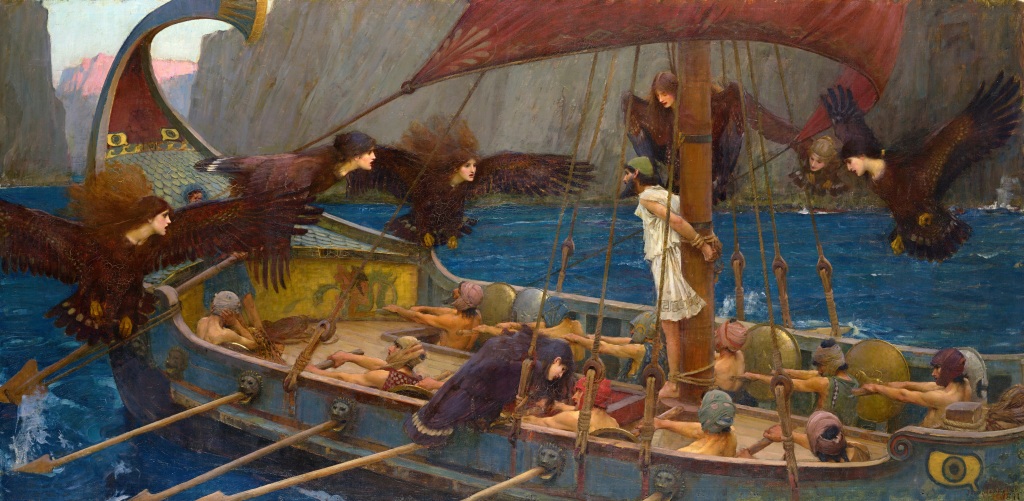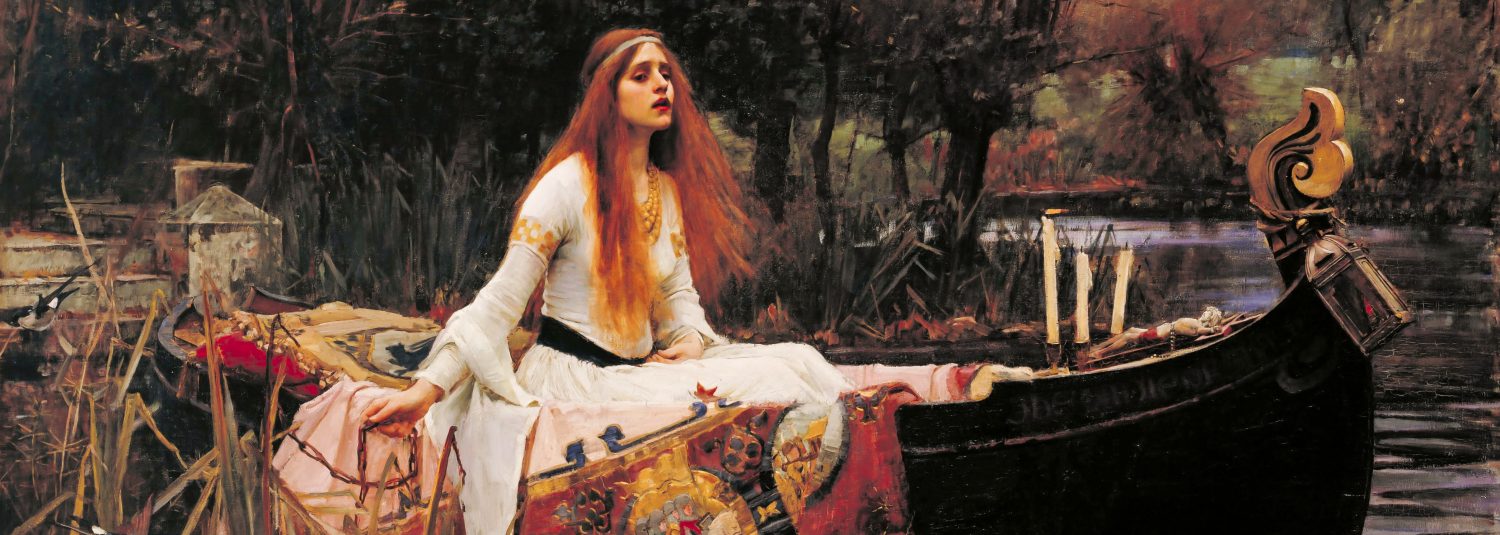
When Ulysses and the Sirens was first exhibited, at London’s Royal Academy in 1891, the painting was praised by most art critics of the day. M. H. Spielmann, writing for the Magazine of Art, declared it:
a very startling triumph … a very carnival of colour, mosaicked and balanced with a skill more consummate than even the talented artist was credited with … The quality of the painting is … a considerable advance upon all his antecedent work.
At the time of Sir Hubert von Herkomer’s purchase of this picture for the National Gallery of Victoria, in June 1891, the Ulysses was only the second work by John William Waterhouse – a painter renowned for his depictions of Greek and Roman subjects – to be acquired for a public gallery. This dramatic painting illustrates an episode from the journeys of the Greek hero Odysseus, as told in the ancient Greek poet Homer’s epic poem The Odyssey. The 1891 Royal Academy exhibition catalogue summarized the Homeric narrative:
The Sirens, who with their melodious voices lured all navigators to destruction … were, according to classical tradition, creatures having the body of a bird with the head of a beautiful woman … They were informed by the oracle that as soon as any passed by without heeding their songs they should perish. Ulysses (the Roman name for Odysseus), warned by Circe, stopped (with wax) the ears of his companions and ordered himself to be bound to the mast, and so successfully passed the fatal coast.
Homer did not, however, provide a physical description of the sirens’ appearance. To achieve authenticity in his depiction, Waterhouse turned to a painted representation of the Homeric story on an ancient Greek vase at the British Museum in London. The vase showed the sirens as winged and clawed birds with human faces, a concept that was taken up by Waterhouse and that came as a surprise to Victorian audiences, who were more used to seeing these mythic creatures portrayed as comely mermaid-like nymphs. (Text by Dr Ted Gott from 19th century painting and sculpture in the international collections of the National Gallery of Victoria, National Gallery of Victoria, Melbourne)












